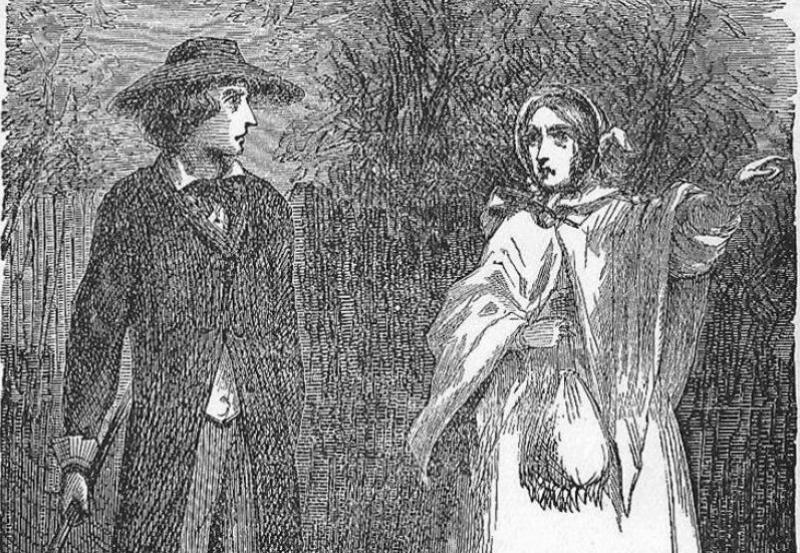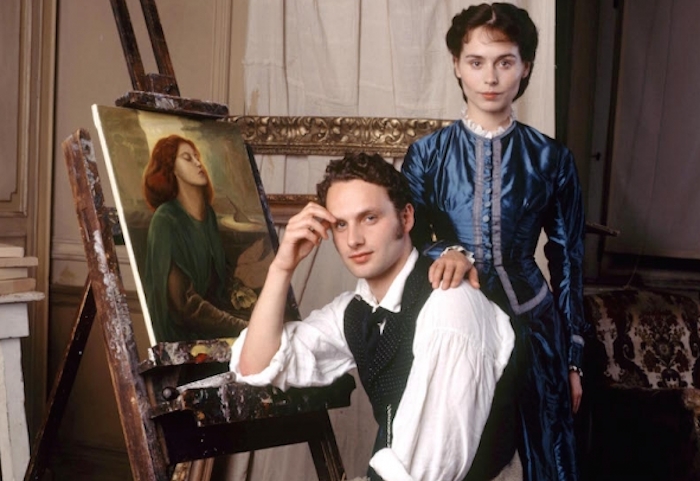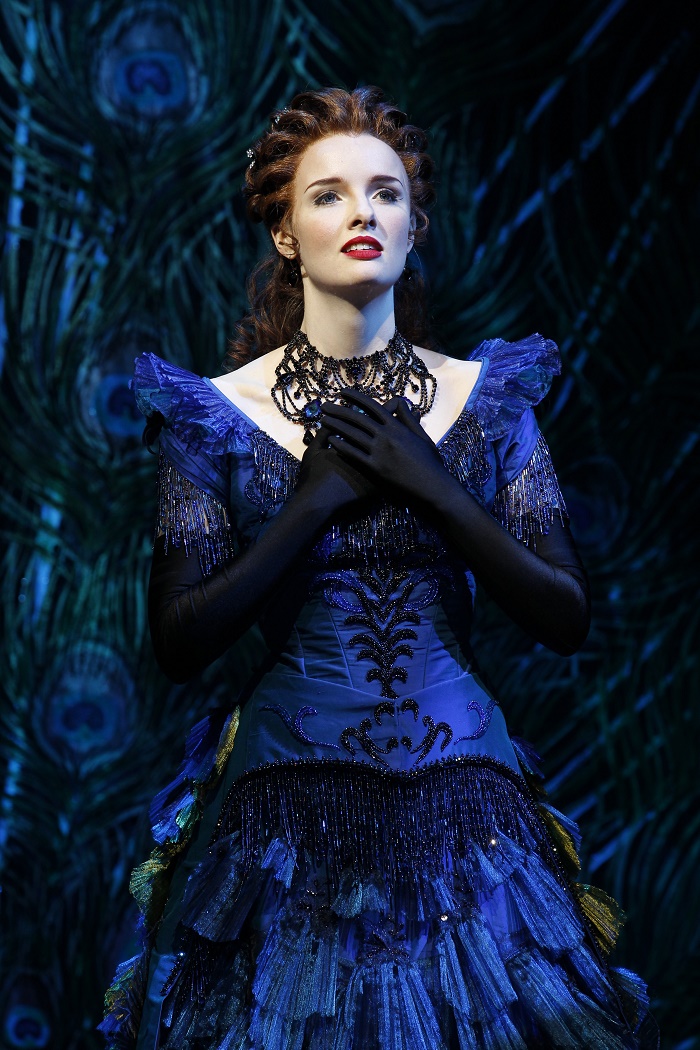'She has escaped from my Asylum!': The Woman in White returns | reviews, news & interviews
'She has escaped from my Asylum!': The Woman in White returns
'She has escaped from my Asylum!': The Woman in White returns
Two more versions of Wilkie Collins's thriller on stage and screen join a long rollcall

The Woman in White insists on being told and retold. Wilkie Collins’s much loved thriller is perhaps the most widely and frequently adapted of all the great Victorian novels. In Marian Halcombe it has a resourceful heroine whose appeal doesn't rest remotely in her looks, and in Count Fosco with his menagerie of sinister pets it has an impeccably flavoursome villain. No wonder the BBC is unleashing yet another television version, while the Charing Cross Theatre has revived Andrew Lloyd Webber’s 2004 musical in a newly stripped-down version.
A first theatrical version found its way onto the London stage when the print was scarcely dry on the serialisation of the novel in August 1860 in Dickens’s newly created magazine All The Year Round, hard upon the heels of A Tale of Two Cities. The pirated production, mounted without the author’s permission, opened in November at the Surrey Theatre in Lambeth, home to plays “adapted to the presumed low taste of the audience”, according to the Illustrated London News, “and not intended to educate them in a better”. An affronted Collins considered making a legal challenge: “I will certainly go and hiss,” he wrote. (Pictured below: Angela Christian in the title role in Andrew Lloyd Webber's 2004 musical)
 Instead, after the play was revived at the Theatre Royal, Leicester in 1870, Collins weighed in with his own version. The author took liberties. He was the first adapter, for instance, to dispense with the famous opening scene in Hampstead when Anne Catherick confronts Walter Hartright. “Mr Wilkie Collins,” explained the programme, “has endeavoured to produce a work which shall appeal to the audience purely on its own merits as a play… Passages carefully elaborated in the book have been in some cases abridged and in others omitted altogether, as unsuitable to the play.”
Instead, after the play was revived at the Theatre Royal, Leicester in 1870, Collins weighed in with his own version. The author took liberties. He was the first adapter, for instance, to dispense with the famous opening scene in Hampstead when Anne Catherick confronts Walter Hartright. “Mr Wilkie Collins,” explained the programme, “has endeavoured to produce a work which shall appeal to the audience purely on its own merits as a play… Passages carefully elaborated in the book have been in some cases abridged and in others omitted altogether, as unsuitable to the play.”
When the production opened at the Olympic Theatre in October 1871, critics were broadly positive, but disliked the naturalistic ending in which the body of the murdered Count Fosco lies in his drawing-room as Lady Fosco knocks on the door, asking to come in. He is “a novelist,” applauded the Daily Telegraph, “whose every novel looks as if it were constructed with a view to dramatic representation.” The play ran for five months, before touring and going for two weeks to New York.
No new versions of the novel were staged in England until 1954, by which time there had been no fewer than seven film versions: five of them silent, and four of those American, the first two appearing in 1912. Clearly, elements of melodrama in the novel were well suited to the stylised mummery of the silent actor. Mostly the films took care to retain the iconic title but, perhaps to differentiate itself from its two immediate predecessors, a 1914 version was called The Dream Woman. A 1917 version reverted to the original name.
The first British account of the novel came in 1929, the year which sounded the death knell for the silent movie. The next time Fosco, Marian , Walter et al appeared on screen, they would be talking. Ten years on, a freely adapted movie called Crimes at the Old Dark House gave the hammy Tod Slaughter a chance to be deliciously dastardly as a Foscoesque villain. The most recent film version was in 1948. In Sydney Greenstreet it offered the rare instance of an actor requiring no padding to fill Fosco’s capacious waistcoat. The same actress, Eleanor Parker, played Anne and Laura.
None of these films is remembered with much affection, or indeed remembered much at all. As befitted the early days of film, they all homed in on the novel’s stagier elements while ignoring the complexities of psychology thrown up by Collins’s tricksy narrative device of telling the story through letters, diaries and journals.
And yet theatre has been curiously reluctant to tackle the novel. It picked up the baton again in 1954 with a play by Dan Sutherland called Mystery at Blackwater. But then the novel was not staged again until 1988, when a version by Melissa Murray starring Helena Bonham Carter as Marian was produced at Greenwich.
 As the author of the prototype thriller who wrote in instalments, Collins can be seen as a prototype television dramatist, and it is on the small screen that The Woman in White has found a second home. The BBC has had three stabs at the novel (and more goes on the radio). The first, in black and white in 1966, appeared in six 25-minute episodes. Alethea Charlton played Marian and Francis de Wolff was Fosco. A more successful attempt in 1982 gave the story six 50-minute episodes in which to stretch its legs. Diana Quick was perhaps a little too beautiful as the plain Marian and Alan Badel a little too thin as Fosco.
As the author of the prototype thriller who wrote in instalments, Collins can be seen as a prototype television dramatist, and it is on the small screen that The Woman in White has found a second home. The BBC has had three stabs at the novel (and more goes on the radio). The first, in black and white in 1966, appeared in six 25-minute episodes. Alethea Charlton played Marian and Francis de Wolff was Fosco. A more successful attempt in 1982 gave the story six 50-minute episodes in which to stretch its legs. Diana Quick was perhaps a little too beautiful as the plain Marian and Alan Badel a little too thin as Fosco.
Anoraks may be keen to note that Frederick Fairlie, the invalid uncle, was played by Ian Richardson, who was still in Fairlie’s bath chair when the BBC had another go in 1997 with Andrew Lincoln as Hartright and Tara Fitzgerald as Marian (pictured, centre page). While not as faithful as its predecessor, this has thus far been undoubtedly the cleverest and most gripping screen adaptation of the novel. Like the Lloyd Webber musical, it tightened down the screws of the plot and, in Simon Callow, delivered a hugely charismatic Fosco. Callow later returned to the role in the Lloyd Webber musical, inheriting it from the Michaels Crawford and Ball.
The latest five-part BBC version stars Jessie Buckley as Marian Halcombe, Olivia Vinall in the thankless role of Laura Fairlie, and Ben Hardy as Hartright. But in the mean time there’s the revised musical version with a book by Charlotte Jones and lyrics by David Zippel (Anna O'Bryne in the title role, pictured above left by Jeff Busby). Trevor Nunn’s original production was one of the first to test out computer-generated imagery designed by William Dudley, including a spectacular coup de théâtre in which a train appeared to bear down on the audience. The technology didn’t catch on, but in recent years, several of Lloyd Webber’s musicals have found an inner truth in pared-down versions. Will The Woman in White, directed by Thom Southerland, be the latest?
The Woman in White insists on being told and retold. Wilkie Collins’s much loved thriller is perhaps the most widely and frequently adapted of all the great Victorian novels. In Marian Halcombe it has a resourceful heroine whose appeal doesn't rest remotely in her looks, and in Count Fosco with his menagerie of sinister pets it has an impeccably flavoursome villain. No wonder the BBC is unleashing yet another television version, while the Charing Cross Theatre has revived Andrew Lloyd Webber’s 2004 musical in a newly stripped-down version.
A first theatrical version found its way onto the London stage when the print was scarcely dry on the serialisation of the novel in August 1860 in Dickens’s newly created magazine All The Year Round, hard upon the heels of A Tale of Two Cities. The pirated production, mounted without the author’s permission, opened in November at the Surrey Theatre in Lambeth, home to plays “adapted to the presumed low taste of the audience”, according to the Illustrated London News, “and not intended to educate them in a better”. An affronted Collins considered making a legal challenge: “I will certainly go and hiss,” he wrote. (Pictured below: Angela Christian in the title role in Andrew Lloyd Webber's 2004 musical)
 Instead, after the play was revived at the Theatre Royal, Leicester in 1870, Collins weighed in with his own version. The author took liberties. He was the first adapter, for instance, to dispense with the famous opening scene in Hampstead when Anne Catherick confronts Walter Hartright. “Mr Wilkie Collins,” explained the programme, “has endeavoured to produce a work which shall appeal to the audience purely on its own merits as a play… Passages carefully elaborated in the book have been in some cases abridged and in others omitted altogether, as unsuitable to the play.”
Instead, after the play was revived at the Theatre Royal, Leicester in 1870, Collins weighed in with his own version. The author took liberties. He was the first adapter, for instance, to dispense with the famous opening scene in Hampstead when Anne Catherick confronts Walter Hartright. “Mr Wilkie Collins,” explained the programme, “has endeavoured to produce a work which shall appeal to the audience purely on its own merits as a play… Passages carefully elaborated in the book have been in some cases abridged and in others omitted altogether, as unsuitable to the play.”
When the production opened at the Olympic Theatre in October 1871, critics were broadly positive, but disliked the naturalistic ending in which the body of the murdered Count Fosco lies in his drawing-room as Lady Fosco knocks on the door, asking to come in. He is “a novelist,” applauded the Daily Telegraph, “whose every novel looks as if it were constructed with a view to dramatic representation.” The play ran for five months, before touring and going for two weeks to New York.
No new versions of the novel were staged in England until 1954, by which time there had been no fewer than seven film versions: five of them silent, and four of those American, the first two appearing in 1912. Clearly, elements of melodrama in the novel were well suited to the stylised mummery of the silent actor. Mostly the films took care to retain the iconic title but, perhaps to differentiate itself from its two immediate predecessors, a 1914 version was called The Dream Woman. A 1917 version reverted to the original name.
The first British account of the novel came in 1929, the year which sounded the death knell for the silent movie. The next time Fosco, Marian , Walter et al appeared on screen, they would be talking. Ten years on, a freely adapted movie called Crimes at the Old Dark House gave the hammy Tod Slaughter a chance to be deliciously dastardly as a Foscoesque villain. The most recent film version was in 1948. In Sydney Greenstreet it offered the rare instance of an actor requiring no padding to fill Fosco’s capacious waistcoat. The same actress, Eleanor Parker, played Anne and Laura.
None of these films is remembered with much affection, or indeed remembered much at all. As befitted the early days of film, they all homed in on the novel’s stagier elements while ignoring the complexities of psychology thrown up by Collins’s tricksy narrative device of telling the story through letters, diaries and journals.
And yet theatre has been curiously reluctant to tackle the novel. It picked up the baton again in 1954 with a play by Dan Sutherland called Mystery at Blackwater. But then the novel was not staged again until 1988, when a version by Melissa Murray starring Helena Bonham Carter as Marian was produced at Greenwich.
 As the author of the prototype thriller who wrote in instalments, Collins can be seen as a prototype television dramatist, and it is on the small screen that The Woman in White has found a second home. The BBC has had three stabs at the novel (and more goes on the radio). The first, in black and white in 1966, appeared in six 25-minute episodes. Alethea Charlton played Marian and Francis de Wolff was Fosco. A more successful attempt in 1982 gave the story six 50-minute episodes in which to stretch its legs. Diana Quick was perhaps a little too beautiful as the plain Marian and Alan Badel a little too thin as Fosco.
As the author of the prototype thriller who wrote in instalments, Collins can be seen as a prototype television dramatist, and it is on the small screen that The Woman in White has found a second home. The BBC has had three stabs at the novel (and more goes on the radio). The first, in black and white in 1966, appeared in six 25-minute episodes. Alethea Charlton played Marian and Francis de Wolff was Fosco. A more successful attempt in 1982 gave the story six 50-minute episodes in which to stretch its legs. Diana Quick was perhaps a little too beautiful as the plain Marian and Alan Badel a little too thin as Fosco.
Anoraks may be keen to note that Frederick Fairlie, the invalid uncle, was played by Ian Richardson, who was still in Fairlie’s bath chair when the BBC had another go in 1997 with Andrew Lincoln as Hartright and Tara Fitzgerald as Marian (pictured, centre page). While not as faithful as its predecessor, this has thus far been undoubtedly the cleverest and most gripping screen adaptation of the novel. Like the Lloyd Webber musical, it tightened down the screws of the plot and, in Simon Callow, delivered a hugely charismatic Fosco. Callow later returned to the role in the Lloyd Webber musical, inheriting it from the Michaels Crawford and Ball.
The latest five-part BBC version stars Jessie Buckley as Marian Halcombe, Olivia Vinall in the thankless role of Laura Fairlie, and Ben Hardy as Hartright. But in the mean time there’s the revised musical version with a book by Charlotte Jones and lyrics by David Zippel (Anna O'Bryne in the title role, pictured above left by Jeff Busby). Trevor Nunn’s original production was one of the first to test out computer-generated imagery designed by William Dudley, including a spectacular coup de théâtre in which a train appeared to bear down on the audience. The technology didn’t catch on, but in recent years, several of Lloyd Webber’s musicals have found an inner truth in pared-down versions. Will The Woman in White, directed by Thom Southerland, be the latest?
Explore topics
Share this article
The future of Arts Journalism
You can stop theartsdesk.com closing!
We urgently need financing to survive. Our fundraising drive has thus far raised £33,000 but we need to reach £100,000 or we will be forced to close. Please contribute here: https://gofund.me/c3f6033d
And if you can forward this information to anyone who might assist, we’d be grateful.

Subscribe to theartsdesk.com
Thank you for continuing to read our work on theartsdesk.com. For unlimited access to every article in its entirety, including our archive of more than 15,000 pieces, we're asking for £5 per month or £40 per year. We feel it's a very good deal, and hope you do too.
To take a subscription now simply click here.
And if you're looking for that extra gift for a friend or family member, why not treat them to a theartsdesk.com gift subscription?

Add comment